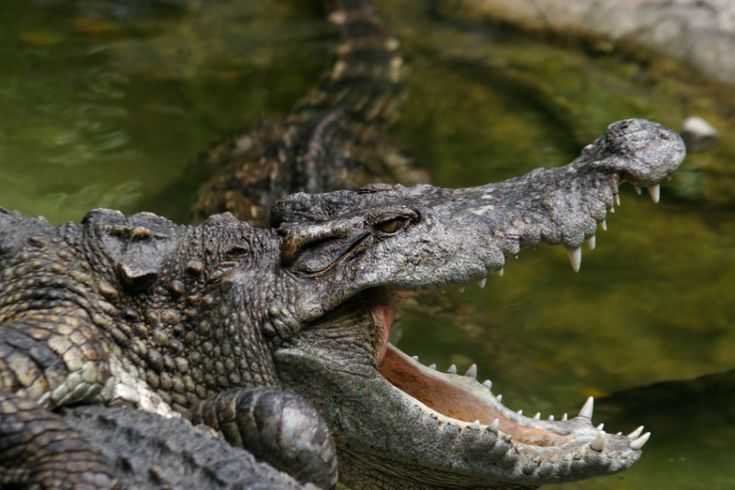Understanding Night Hunters: Behavior, Habitats, And Prey

Table of Contents
Nocturnal Behavior Adaptations in Night Hunters
Night hunters have evolved incredible adaptations to excel in the dark. These adaptations primarily focus on enhanced sensory perception and specialized hunting strategies.
Sensory Enhancements
Low light conditions demand heightened senses. Night hunters often possess superior night vision, acute hearing, or exceptional smell, allowing them to navigate and hunt effectively in darkness.
- Superior Night Vision: Many nocturnal mammals, like cats and owls, possess a tapetum lucidum, a reflective layer behind the retina that amplifies available light, improving night vision. Owls also have exceptionally large eyes, further enhancing their ability to see in low light.
- Acute Hearing: Bats and owls rely heavily on hearing. Bats utilize echolocation, emitting high-frequency sounds and interpreting the returning echoes to navigate and locate prey. Owls have large, asymmetrical ears, providing excellent directional hearing, allowing them to pinpoint the precise location of prey even in dense foliage.
- Exceptional Smell: Many nocturnal mammals, such as foxes and raccoons, have a highly developed sense of smell, allowing them to track prey and navigate their environment using scent trails. Nocturnal rodents also use their sensitive whiskers (vibrissae) to detect changes in air currents and locate obstacles in the dark.
Keywords: night vision, echolocation, hearing, smell, sensory adaptation, nocturnal animals, tapetum lucidum, vibrissae
Hunting Strategies
Night hunters employ diverse hunting techniques tailored to their specific prey and environment.
- Ambush Predators: Owls and crocodiles are masters of ambush, remaining motionless until prey comes within striking distance. Their camouflage and silent movements make them highly effective ambush predators.
- Active Pursuit Hunters: Wolves and foxes are active hunters, pursuing their prey over distances. They rely on speed, stamina, and keen senses to track and catch their quarry.
- Insectivores: Bats and hedgehogs are insectivores, employing different strategies to capture insects. Bats use echolocation, while hedgehogs rely on their keen sense of smell and foraging abilities.
Keywords: hunting techniques, ambush predator, active hunting, predator prey relationship, nocturnal hunting strategies, insectivores
Circadian Rhythms and Sleep Patterns
Understanding the circadian rhythms of night hunters is key to understanding their behavior. Their activity patterns are largely dictated by prey availability, predator avoidance, and environmental factors.
- Peak Activity: The timing of peak activity varies considerably among species. Some might be most active at twilight (crepuscular), while others are strictly nocturnal.
- Sleep Patterns: Nocturnal animals exhibit diverse sleep patterns, often involving shorter periods of sleep interspersed throughout the night, allowing them to respond quickly to changes in their environment.
- Environmental Influences: Factors like moonlight, temperature, and prey availability significantly influence the timing and duration of their activity periods.
Keywords: circadian rhythm, sleep patterns, nocturnal activity, activity patterns, biological clock, crepuscular
Habitats of Night Hunters: Diverse Ecosystems and Niches
Night hunters occupy a remarkable range of habitats, each presenting unique challenges and opportunities.
Terrestrial Habitats
Many night hunters thrive in terrestrial environments.
- Forests: Owls, foxes, and badgers are commonly found in forests, utilizing the dense undergrowth for cover and hunting.
- Grasslands: Owls and badgers also inhabit grasslands, where they hunt small mammals and insects.
- Deserts: Nocturnal animals in deserts, like owls and scorpions, have evolved adaptations to survive extreme temperatures and arid conditions.
Keywords: forest, grassland, desert, woodland, savannah, terrestrial habitat, nocturnal ecosystem
Aquatic Habitats
Several night hunters are adapted to aquatic life.
- Nocturnal Fish: Many species of fish are active at night, hunting in the darkness.
- Crocodiles: Crocodiles are ambush predators, waiting patiently in the water for prey to come close.
- Amphibians: Some amphibians are nocturnal, hunting insects and other small invertebrates in aquatic or semi-aquatic environments.
Keywords: aquatic habitat, nocturnal fish, freshwater, saltwater, marine nocturnal animals, amphibians
Aerial Habitats
The night sky is a vibrant hunting ground.
- Bats: Bats are highly specialized aerial hunters, using echolocation to navigate and capture insects in flight.
- Nightjars: These birds are crepuscular and nocturnal, catching insects on the wing.
- Moths: Many moths are nocturnal, and while some are prey, others are important pollinators, playing a role in the nocturnal ecosystem.
Keywords: aerial habitat, nocturnal flight, bats, nightjars, moths, aerial hunting
Prey of Night Hunters: A Diverse Food Web
The prey of night hunters reflects the incredible diversity of nocturnal ecosystems.
Insects
Insects are a primary food source for many night hunters.
- Insectivores: Bats, spiders, frogs, and some birds are insectivores, consuming large quantities of insects each night. Hunting methods vary; from aerial pursuit to sticky webs and ambush tactics.
- Nocturnal Insects: The abundance and diversity of nocturnal insects fuel the success of many night hunters.
Keywords: insects, insect prey, insectivores, nocturnal insects, arthropod prey
Small Mammals
Small mammals represent a vital food source for larger night hunters.
- Rodent Prey: Owls, foxes, weasels, and some cats are skilled hunters of rodents and other small mammals.
- Hunting Strategies: These predators use a variety of methods, including stealth, speed, and powerful jaws to capture their prey.
Keywords: small mammals, rodent prey, mammal prey, carnivores, predators
Fish and Other Aquatic Prey
Aquatic and semi-aquatic night hunters target fish and other aquatic organisms.
- Piscivores: Otters and crocodiles are examples of piscivores, specializing in hunting fish.
- Hunting Techniques: These predators utilize a combination of stealth, speed, and specialized adaptations for capturing their aquatic prey.
Keywords: fish prey, aquatic prey, piscivores, crocodiles, nocturnal fish
Conclusion
The world of night hunters is a fascinating realm of specialized adaptations and intricate ecological interactions. Understanding their behaviors, habitats, and prey provides a deeper appreciation for the complex web of life that thrives under the cover of darkness. From the silent flight of owls to the echolocation of bats, these creatures demonstrate the remarkable ingenuity of nature. Continue exploring the captivating world of "Night Hunters" to discover more about these amazing animals and the ecosystems they inhabit. Further research into specific species of night hunters will reveal even more about their fascinating lives.

Featured Posts
-
 Is John Wick 5 Really Happening A Look At The Evidence
May 12, 2025
Is John Wick 5 Really Happening A Look At The Evidence
May 12, 2025 -
 Boston Celtics Player Forgoes Nba Award Campaign
May 12, 2025
Boston Celtics Player Forgoes Nba Award Campaign
May 12, 2025 -
 Tasman Road Closure A Realistic Perspective From A Trucking Professional
May 12, 2025
Tasman Road Closure A Realistic Perspective From A Trucking Professional
May 12, 2025 -
 Discover Rotorua The Heart Of Maori Culture In New Zealand
May 12, 2025
Discover Rotorua The Heart Of Maori Culture In New Zealand
May 12, 2025 -
 33 Top Rated Littleton Restaurants Your Ultimate Dining Guide
May 12, 2025
33 Top Rated Littleton Restaurants Your Ultimate Dining Guide
May 12, 2025
Latest Posts
-
 Rory Mc Ilroy And Shane Lowrys Zurich Classic Defense Stumbles
May 12, 2025
Rory Mc Ilroy And Shane Lowrys Zurich Classic Defense Stumbles
May 12, 2025 -
 Zurich Classic Mc Ilroy Lowry Partnership Confirmed For 2024
May 12, 2025
Zurich Classic Mc Ilroy Lowry Partnership Confirmed For 2024
May 12, 2025 -
 Mc Ilroy Lowry Trail Leaders In Zurich Classic Title Defense Bid
May 12, 2025
Mc Ilroy Lowry Trail Leaders In Zurich Classic Title Defense Bid
May 12, 2025 -
 Rory Mc Ilroy And Shane Lowry To Defend Zurich Classic Title
May 12, 2025
Rory Mc Ilroy And Shane Lowry To Defend Zurich Classic Title
May 12, 2025 -
 Augusta National Rory Mc Ilroys Daughters Impressive Putt
May 12, 2025
Augusta National Rory Mc Ilroys Daughters Impressive Putt
May 12, 2025
